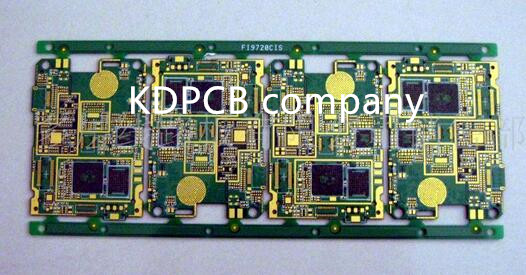One of the questions that often is asked by our technical support hotline is, "what is the standard of cleanliness for IPC?". This is a simple and straightforward question that is often asked by industrial novices, so simple and straightforward answers are generally what they want. But, in most cases, it's not enough for their personal needs.
To answer this question, first of all, to understand the simple criteria: the IPC standard is being used, the types of residues, applicable scope and cleanliness standards. One answer to these questions, the old way - quick and easy.
Table 1, IPC cleanliness requirements summary
Standard residue type for cleanliness standards
<1.56 g/cm2NaCl IPC-6012 plate equivalent ion solder coating before all categories of electronic
IPC-6012 organics * all categories of electronic solder coating before the plate without pollutant emission
J-STD-001 all types of all categories of electronic solder coating before the light enough to ensure solderability
J-STD-001 particles of all electronic categories of welding assembly is not loose, non volatile, minimum electrical spacing
J-STD-001 rosin * 1 types of electronic assembly <200 after welding g/cm2
2 types of electronic welding assembly <100 g/cm2
3 types of electronic welding assembly <40 g/cm2
J-STD-001 ion * all electronic class of <1.56 after assembly g/cm2NaCl
IPC-A-160 visible residues of all electronic categories of solder after assembly visual acceptability
* when asked to test
But did these answers provide the necessary facts? Unfortunately, very few people are satisfied with the phone call. In fact, these answers often lead to more problems, such as: "is that right?" "If the pollutant has more chloride how to do?" How to do "; in the process of Disposable flux residue?" What about the hypothetical conformal coating (coat conformal) to protect the assembly?" Or, "what about other non ionic contaminants?"
Not like the past rosin flux dominated the industrial "during the good times", the new surface coating, flux, welding and cleaning system are coming in all the time. Obviously, there is no "universal" answer. For this reason, standards and specifications are emphasized to prove the reliability of the test procedure, rather than a simple pass / fail figure.
Again carefully look at the IPC standards - especially IPC-6012, rigid printed board of technical indicators and performance - reveals the should be in the file specified on the solder layer, solder or alternative surface after coating the plate clean degree requirements. This means that the assembly manufacturer must tell PCB manufacturer they want to light how clean. It also to use disposable process assembly manufacturers leeway to on the circuit board in the provisions of a more stringent clean degree requirements.
Assembly manufacturers not only need to be specified in the cleanliness of the board, but also to be consistent with the user's cleanliness of the assembly of the product. In accordance with the J-STD-001, unless the user specified, the manufacturer should require cleanliness regulations (or disposable or one or two mounting surfaces to clean) test and cleanliness (or does not require testing, surface insulation resistance testing, or ion test, rosin or other organic contamination on the surface of). Then the cleaning system is selected based on the compatibility of the welding process and the product. Cleanliness test will depend on the use of flux and cleaning chemicals. If the use of rosin flux, J-STD-001 provides 1, 2, 3 products of the digital standard. Otherwise, the ionic contamination test is the simplest and least cost. J-STD-001 also has general numerical requirements, as shown in Table 1.
If the chloride content is a concern, the results of industrial studies involving ion chromatography analysis have shown that the following guidelines are reasonable breakpoints for the chloride content. When the chloride content exceeds the following level, the risk of electrolytic failure is increased:
The low solid flux, less than 0.39 g/cm2
The high solid flux rosin, less than 0.70 g/cm2
The water soluble flux, less than 0.75 - 0.78 g/cm2
The tin / lead metal plate, less than 0.31 g/cm2...
The final answer to a clean discussion is that the true cleanliness is determined by the product and the desired end use environment. But how to decide what to clean for a particular end use environment is enough? Through thorough and rigorous analysis, research on the long-term reliability of each potential pollutant and its final use.
But is there a simpler way to do it? Through the introduction of other people's experience to shorten the learning curve. Such as IPC, EMPF and Avionics Center Naval (US Navy Aviation Center) has carried out a series of tests and Industrial Research on various cleanliness situations; some of them can be found in the public sphere. These technical papers and manuals guide individuals or companies to understand the elements of this subtle, but also critical, process test and effect. A good example is IPC, the United States Environmental Protection Agency (EPA, environmental protection agency, the U.S. Department of Defense (DoD, Department of Defense) sponsored, completed in the late 1980s, deep clean and cleanliness test procedures. The application of new materials and processes for the use of, chlorofluorocarbon, and the reduction of fluoride and carbon tetrachloride (CFC) levels in the process of electronic manufacturing is investigated and studied.
The next big fluctuation in the electronics industry - the movement of lead free solder and the free halide insulation - may trigger another study of a wide range of industrial and clean and clean degrees. Until then, readers and telephone consultation will need in the master on the basis of IPC spec from sales of a variety of materials, case study, report and tell their individual cleaning requirements should is what guidelines to see clearly.
